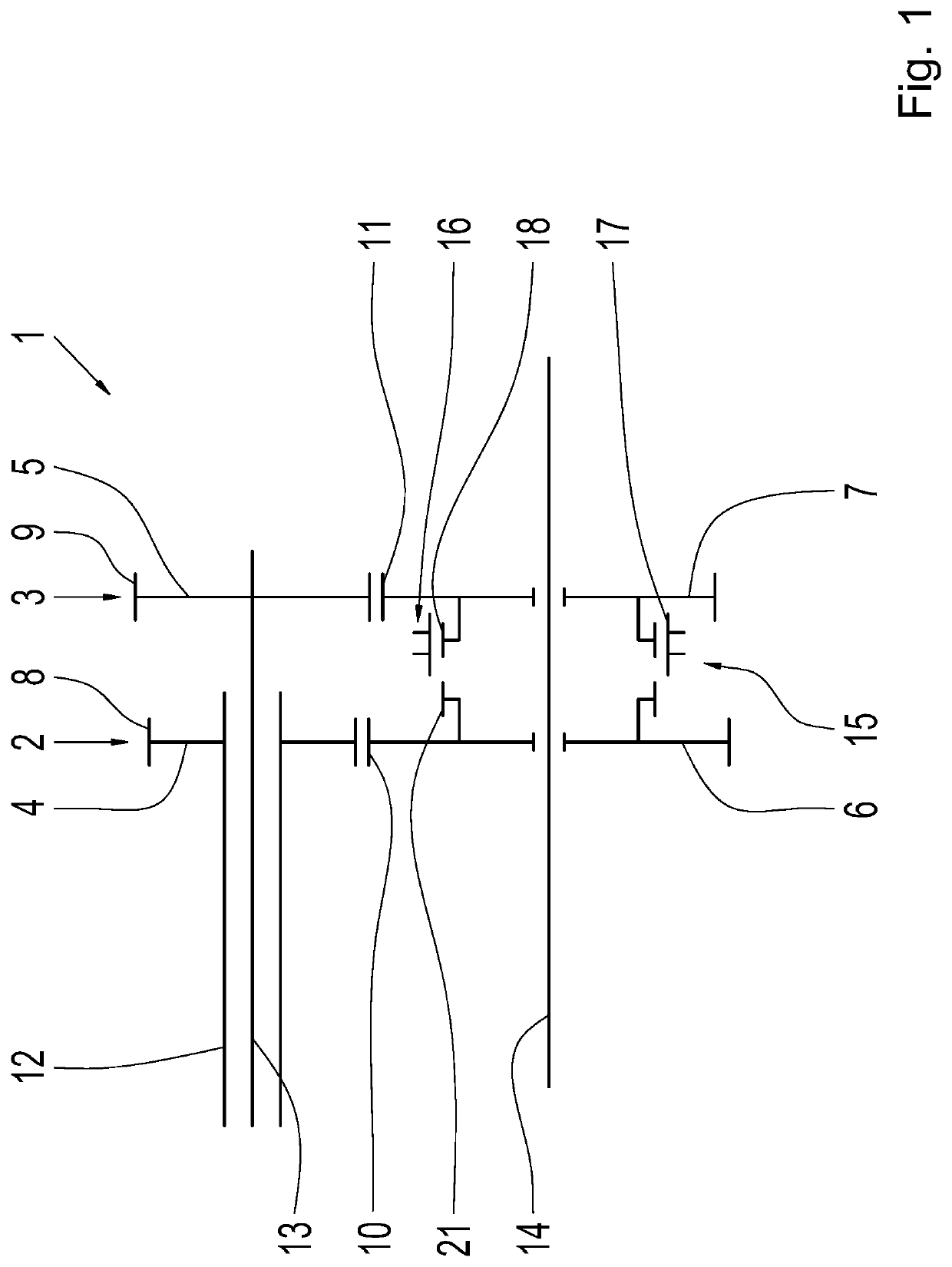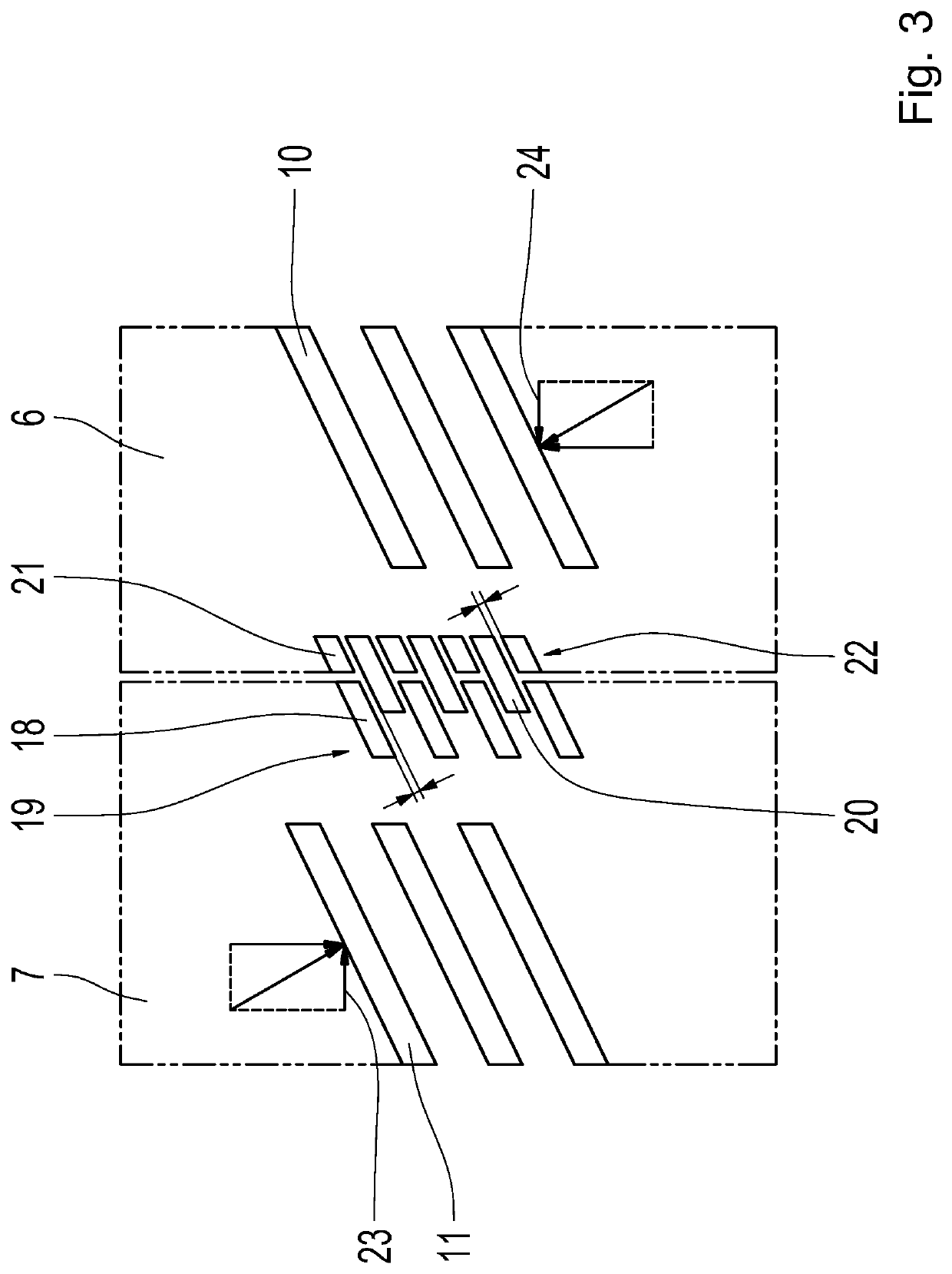Switching arrangement and transmission
a technology of switching arrangement and transmission, applied in the direction of mechanical actuated clutches, interengaging clutches, gearing, etc., can solve the problems of greater demands on the bearings of idler gears
- Summary
- Abstract
- Description
- Claims
- Application Information
AI Technical Summary
Benefits of technology
Problems solved by technology
Method used
Image
Examples
Embodiment Construction
[0031]Reference will now be made to embodiments of the invention, one or more examples of which are shown in the drawings. Each embodiment is provided by way of explanation of the invention, and not as a limitation of the invention. For example, features illustrated or described as part of one embodiment can be combined with another embodiment to yield still another embodiment. It is intended that the present invention include these and other modifications and variations to the embodiments described herein.
[0032]FIG. 1 shows a diagrammatic view of a part of a transmission 1, wherein the transmission 1 is represented in the area of two spur gear stages 2 and 3. The spur gear stages 2 and 3 are each composed of one first or fixed gear 4 and 5, respectively, and one second or idler gear 6 and 7, respectively, wherein the fixed gear 4 or 5 of the spur gear stage 2 or 3, respectively, is meshed, at a running tooth system 8 or 9, respectively, with a running tooth system 10 or 11, respect...
PUM
 Login to View More
Login to View More Abstract
Description
Claims
Application Information
 Login to View More
Login to View More - R&D
- Intellectual Property
- Life Sciences
- Materials
- Tech Scout
- Unparalleled Data Quality
- Higher Quality Content
- 60% Fewer Hallucinations
Browse by: Latest US Patents, China's latest patents, Technical Efficacy Thesaurus, Application Domain, Technology Topic, Popular Technical Reports.
© 2025 PatSnap. All rights reserved.Legal|Privacy policy|Modern Slavery Act Transparency Statement|Sitemap|About US| Contact US: help@patsnap.com



